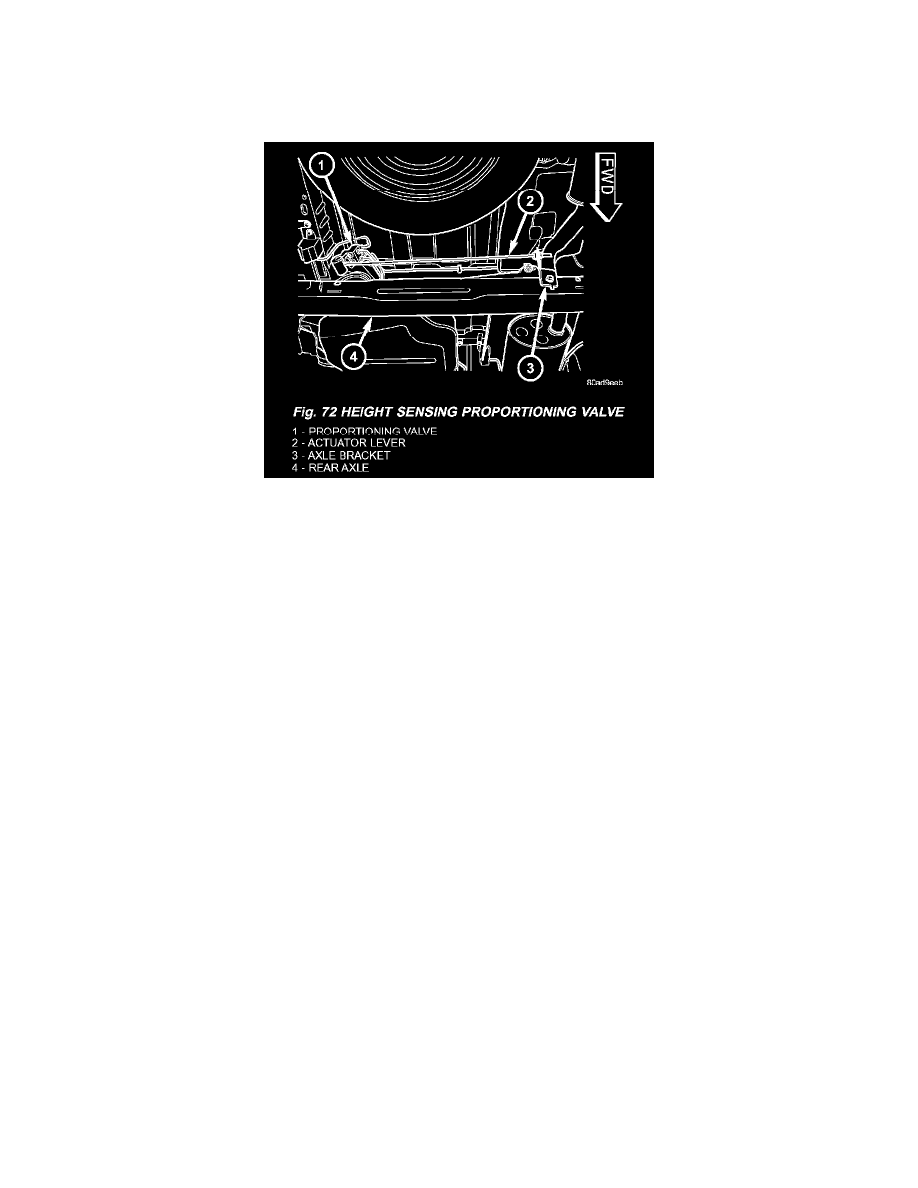Voyager V6-3.3L VIN 3 Flex Fuel (2003)

Brake Proportioning/Combination Valve: Description and Operation
DESCRIPTION - PROPORTIONING VALVE (HEIGHT SENSING)
NOTE: Only vehicles without antilock brakes (ABS) have a proportioning valve. Vehicles with ABS utilize electronic brake distribution, which is
controlled through the ABS integrated control unit.
Vehicles not equipped with ABS use a height sensing proportioning valve. It is mounted to the body of the vehicle above the rear axle. It has an
actuator lever that attaches to the rear axle and moves with the axle to help the valve sense the vehicle height.
CAUTION: The height sensing proportioning valve is not adjustable. No attempt should be made to adjust it. It is replaced as a complete assembly.
CAUTION: The use of after-market load leveling or load capacity increasing devices on this vehicle are prohibited. Using air shock absorbers or
helper springs on this vehicle will cause the height sensing proportioning valve to inappropriately reduce the hydraulic pressure to the rear brakes.
This inappropriate reduction in hydraulic pressure potentially could result in increased stopping distance of the vehicle.
OPERATION - PROPORTIONING VALVE (HEIGHT SENSING)
Vehicles not equipped with ABS use a height sensing proportioning valve.
The height sensing proportioning valve operates similarly to a standard proportioning valve in the following way. As hydraulic pressure is applied to
the valve, full input hydraulic pressure is supplied to the rear brakes up to a certain pressure point, called the split point. Beyond the split point, the
proportioning valve reduces the amount of hydraulic pressure to the rear brakes according to a given ratio. Thus, on light brake applications,
approximately equal hydraulic pressure will be transmitted to both the front and rear brakes. Upon heavier brake applications, the hydraulic pressure
transmitted to the rear brakes will be lower than the front brakes. This will prevent premature rear wheel lockup and skid.
Here is how the height sensing proportioning valve differs from a standard proportioning valve. As the height of the rear suspension changes, the
height sensing portion of the proportioning valve changes the split point of the proportioning valve. When the height of the rear suspension is low, the
proportioning valve interprets this as extra load and the split point of the proportioning valve is raised to a higher pressure to allow for more rear
braking. When the height of the rear suspension is high, the proportioning valve interprets this as a light load and the split point of the proportioning
valve is lowered to a lower pressure and rear braking is reduced.
The height sensing proportioning valve regulates the pressure by sensing the load condition of the vehicle through the movement of the proportioning
valve actuator lever. As the position of the rear axle changes, depending on the load the vehicle is carrying, the movement is transferred to the
proportioning valve. The proportioning valve adjusts the hydraulic pressure accordingly.
The height sensing proportioning valve allows the brake system to maintain the optimal front to rear brake balance regardless of the vehicle load
condition. Under a light load condition, hydraulic pressure to the rear brakes is minimized. As the rear load condition increases, so does the hydraulic
pressure to the rear brakes.
